In this five-part blog series, Burning Man Project Land Fellow, Lisa Schile-Beers (a.k.a. Scirpus), will share the ecological survey work she is doing on Fly Ranch by using touch, taste, smell, sound and sight to frame her findings and guide you around the property. Burning Man’s Fellows program is an investment in people, leadership and innovation, and Lisa is the third Burning Man Fellow since 2015.
Take Time to Smell the Roses
I am amazed at how well scents travel in an arid environment. I’m used to humidity aiding the transport of scent, but everything has its unique way in the desert, and Fly Ranch is not alone. Roughly a quarter of the property is covered with sagebrush and its allies, also known as the sagebrush steppe. Right after a rain or in the morning when there still is a hint of dew, sagebrush is queen, and there is no room for other scents in your nose. Many days, I start my explorations by rubbing my fingers on a few sage leaves and then smelling them to attune my senses to the land. I did this as a child in Wyoming, and I find the scent of sage to be quite grounding. No wonder it’s used in so many traditional ceremonies. Walking around, the casual brush of my jeans against sage or rubber rabbitbrush releases a tiny pop of scent, reminding me to walk at an even slower pace and be mindful of the neighbors.

Until I started my fellowship, I knew little about the plants at Fly Ranch, let alone other areas in the Great Basin. Identification of most plants came easily to me once I got immersed in the land, except for one shrub that I later learned is called rubber rabbitbrush. I didn’t realize that there are over 20 varieties of this species — some grey, some green, some with more hairs, some with bigger flowers — and I’m guessing that two thirds, if not more, are at Fly. Once I figured it out, the majority of my “unknown shrub” entries that were perplexing me got gloriously reclassified into one species. The scientific name for rubber rabbitbrush is Ericameria nauseosa — apparently some people find its scent to be quite terrible. To me, however, it’s a lovely sweet sage mixed with licorice, and it comes to the forefront in the fall when everything else is dying back. The flowers are a bright yellow and cover the landscape with a perky end-of-season glow.

I’m always happy to come across fragrant plants on the property. I had no idea that there is a native rose — Wood’s rose — that grows along creeks or that small patches of mint can be found along hotspring edges. Rough bugleweed, a species similar to mint, also is along pond edges and has a unique dusty smell. Along the sandy fingers of washes that only flow a few times a year, white sage grows, and its scent is much stronger that its sagebrush relative. Despite being a nasty invasive tree, salt cedar (Tamarisk) flowers have a nice mellow scent, as do the flowers of Russian olive, another non-native tree. Other invasive plants, like perennial pepperweed, just smell like disgusting gas station bathroom air-fresheners.
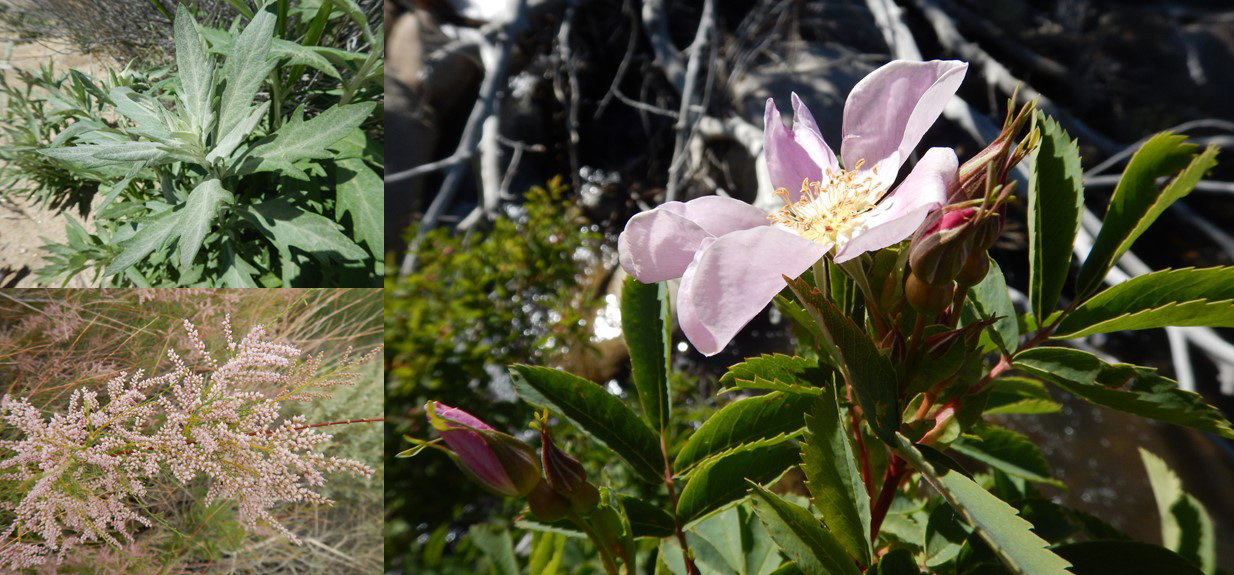
Where There’s Smoke…
Summer and fall air is often thick with the scent of smoke. A few days this past year, the smoke was so pervasive and thick between local fires and those in California that I couldn’t see the peaks of Granite range a few miles away, let alone its foothills. Days like those were spent inside, and the smoke still managed to seep through leaky windows to create a less productive mind and constricted lungs. Smoky skies and scarred landscapes denuded of shrubs appear to be a growing trend in Nevada. Invasive plants, such as cheatgrass and shield peppergrass, increase the fuel for fires and provide and easy, continuous connection between more sparsely spaced native desert shrubs, increasing the fire’s heat and reach. After a fire, the invasive plants come back thicker and stronger, creating a vicious positive feedback loop that is nearly impossible to stop.
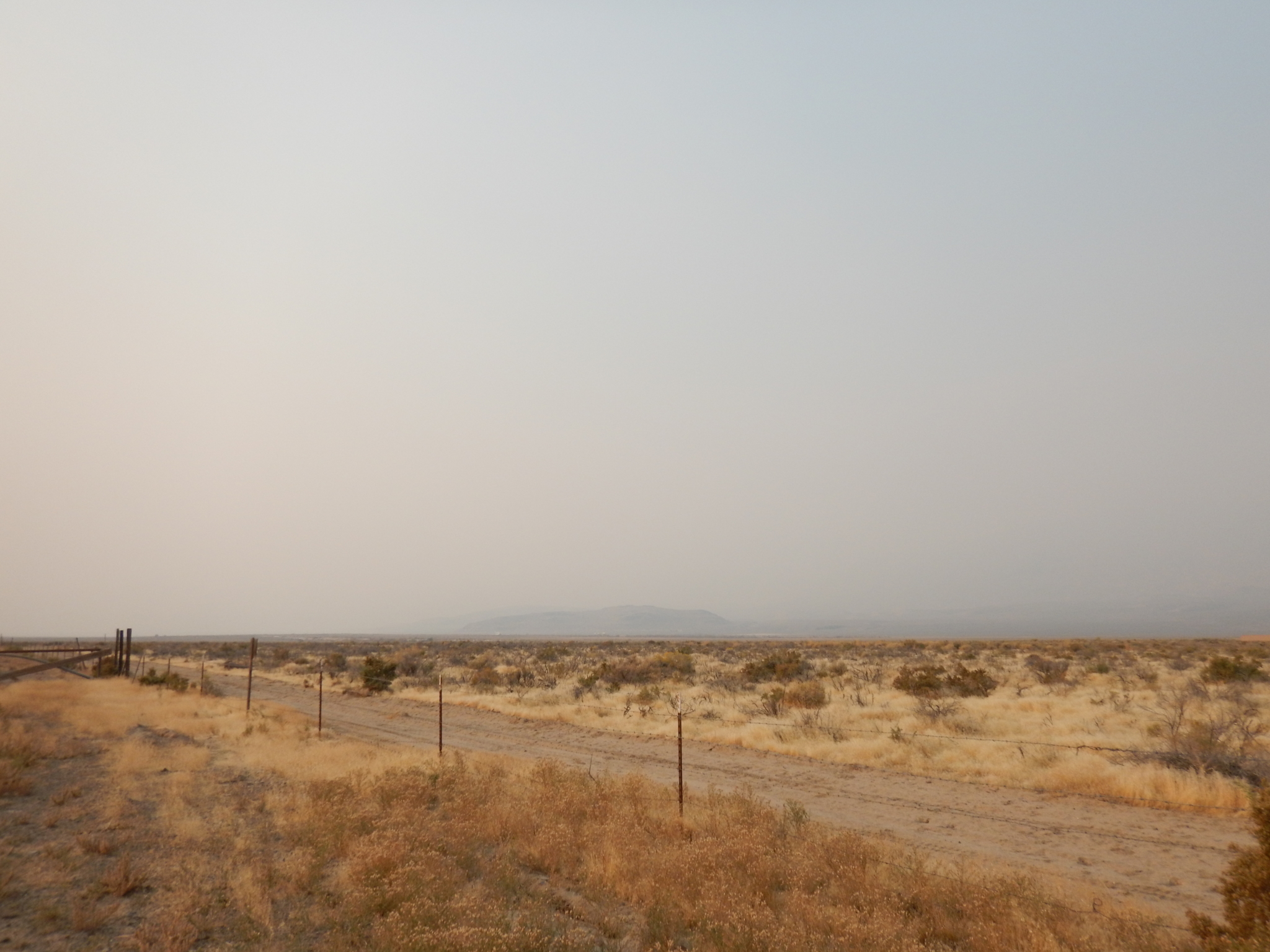
In 2010, a fire ignited on the Granite mountain range to the west of Fly Ranch. After it seemed like it was contained, winds picked up, and it grew quickly to the northeast, hopping over 34 and spreading its fiery fingers into 170 acres of the sagebrush of Fly Ranch. It’s been nearly eight years since the fire, and the sagebrush is just now starting to return, but only along the edges. I find beauty in the charred remains of the sagebrush, greasewood, and other dominant shrubs that were once queens before the fire and am curious how long it will be before they’re shaded by new growth.
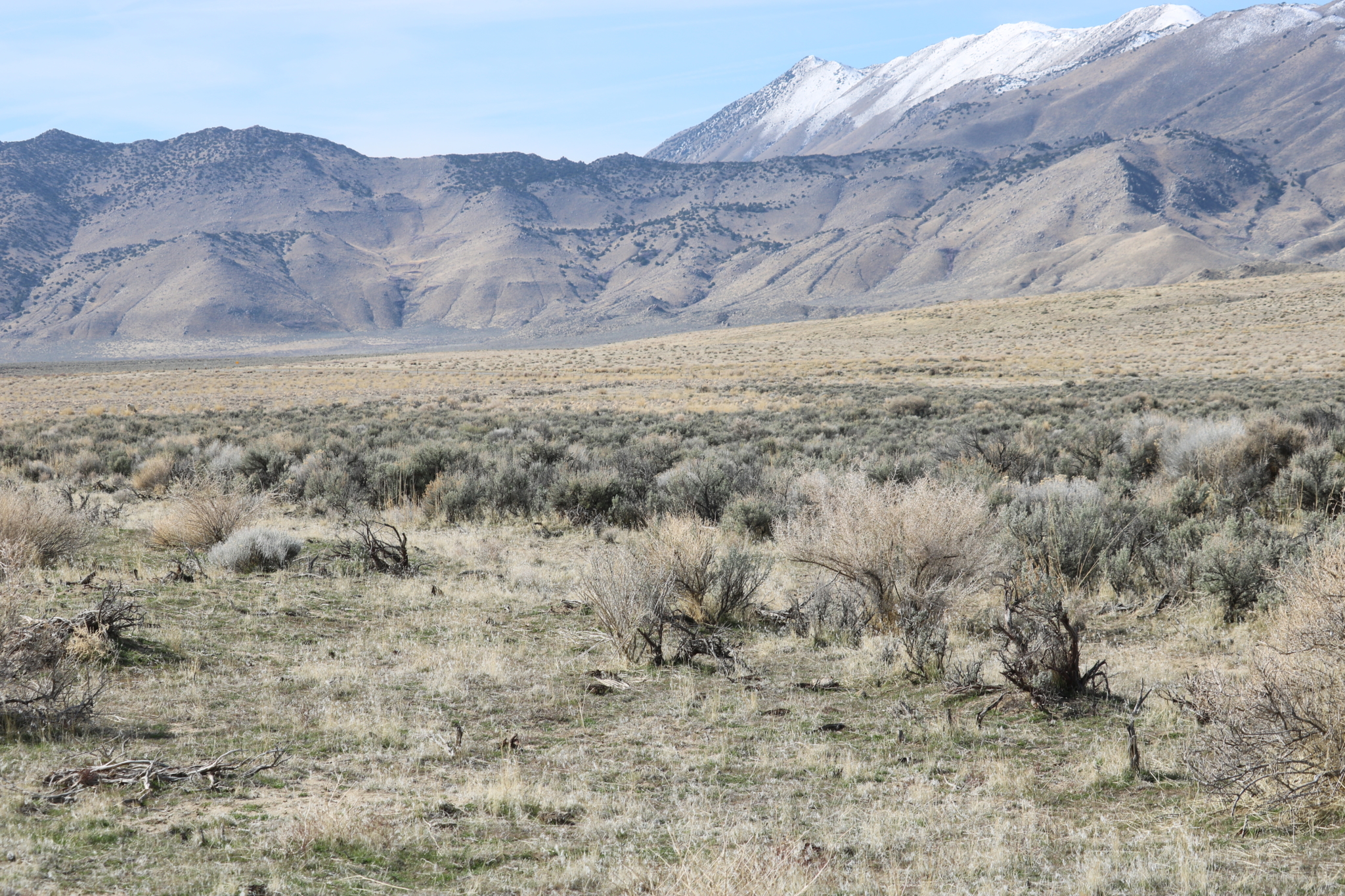
In July of last year, I woke up suddenly to a bright flash and an instantaneous and extremely loud clap of thunder that felt way too close to home. I rushed outside to see if my gut feeling of fire was true and didn’t see anything. I made some coffee and went back outside to check again, and a fire indeed had begun halfway up the mountains. Never before had I experienced wildfire up this close, yet an innate calm instinct kicked in: call my neighbors at Black Rock Station, Burning Man’s production and storage property, to see if it had been reported, identify essential items in my home and load them, food, and water into my truck, and top off my truck’s gas tank with a couple of five-gallon cans. Then I waited and watched with binoculars glued to the fire. Within an hour, the fire luckily was put out by rain. The burn scar, if viewed at the correct angle, looks like an elongated heart — an odd shape for something that just scorched the earth.
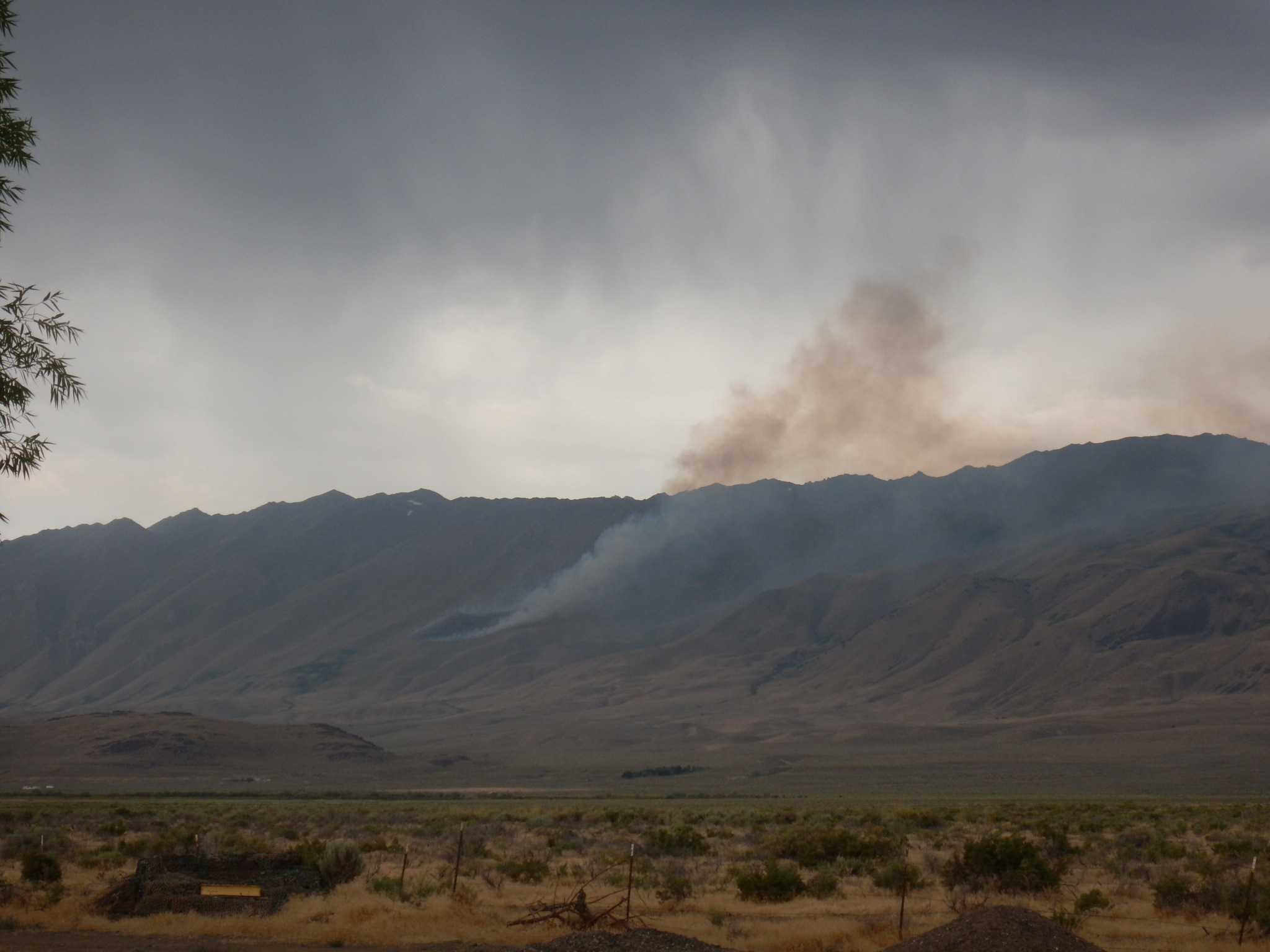
Rotten Eggs
There is a particular wetland scent. Some think it smells like rotten eggs. After 20 years of working in wetlands, it smells oddly like home — a weird, wet, stinky home. In brackish and saline marshes, the smell is generated by microbes consuming sulfur-based compounds in the tidal waters (scentless) and passing hydrogen sulfide as gas (rotten eggs). At Fly, though, the smell comes from the impressive geothermal activity below the surface. Here, the sulfur compounds get extracted from the bedrock deep below the surface in the pressurized, anaerobic water, and microbes metabolize them into hydrogen sulfide. To me, the scent at Fly is different — there are more layers to it, probably because of the deep trek that the water’s been through to make it to the surface.
There are roughly 200 acres of wetlands at Fly Ranch that are interspersed with hot springs, geysers, and small geothermal pools. The air is definitely permeated by the sulfur-based scent, and wet soil that’s disturbed by walking could potentially knock you out if you took a deep breath of it (not advised…).
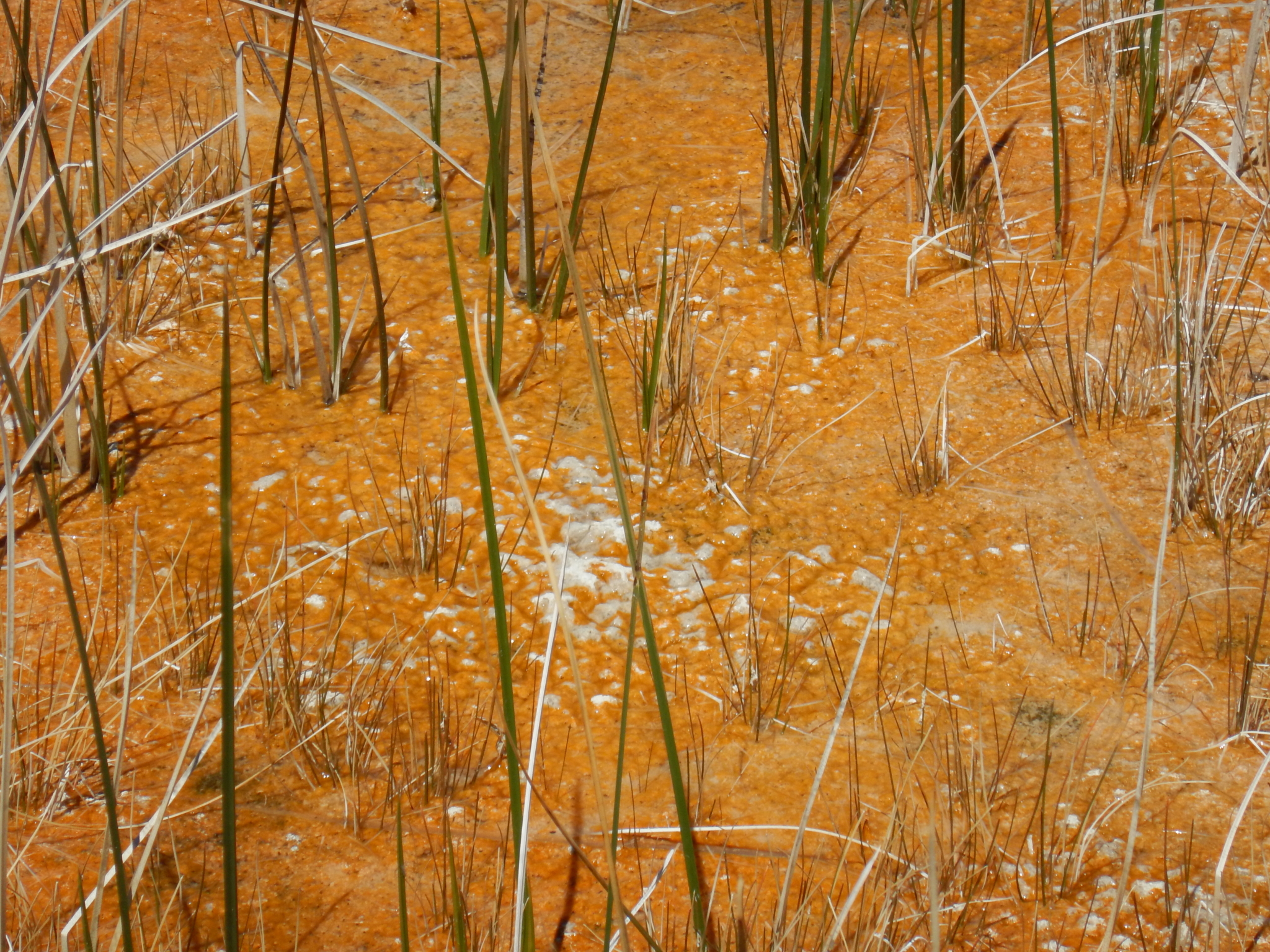
Death
In the desert, death is all around. It is not a negative thing; I’ve learned that it just… is. One element of rural living I had never experienced was how raw and exposed the cycle of life is. Between the harsh climate and constant predation, all elements of this ecosystem are in a constant state of survival.
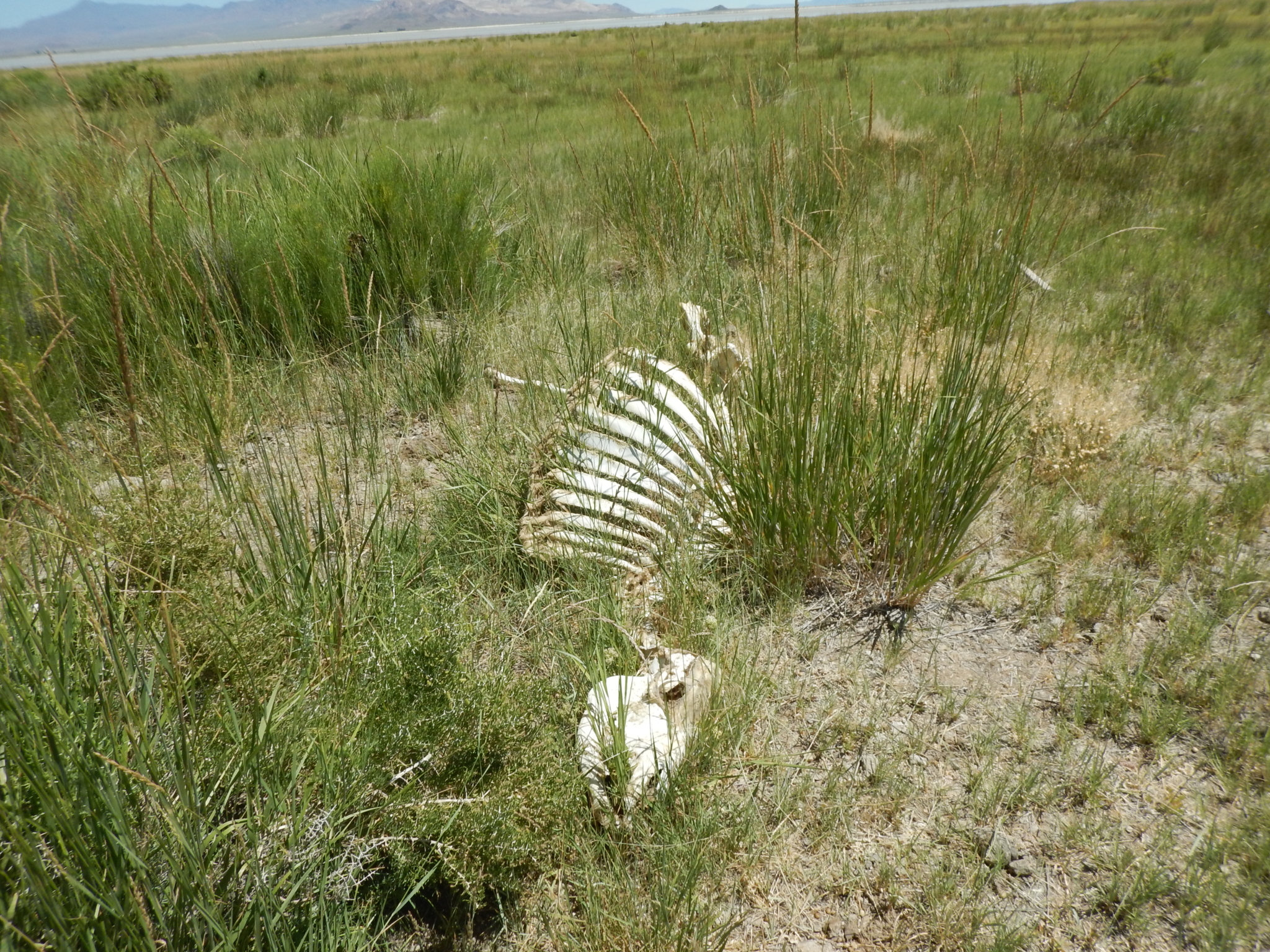
Within the first few weeks of my fellowship, I was walking near the Ranch house, smelled a putrid odor, and saw something strange on one of the barbed-wire fences. As I approached it, I noticed a deer had gotten caught while jumping over the fence, and most of its body was still there. I spent a little time with it (upwind) to ponder what I was seeing, gladly not smelling anymore. I felt sorrow that the deer got caught on this man-made structure designed to keep things out or in — Was it being chased? Was it just a simple mis-step? Did it even see the wire? — and then I felt complacent, more matter-of-fact. That it is just how things are out here. My thoughts then switched to the snarky part of my brain, which started thinking of captions for demotivational posters (”Jump higher next time!”). That was the first experience of many when I smelled death before seeing it — a buck taken down in a pond, a large steer that collapsed near the Ranch house, a coyote that looked like it was sleeping, and countless birds.

Usually, by the time I encounter any remains of an animal, only bones are left and they’re scattered across a large area. The skull is almost always missing or chewed to pieces. Coyotes, eagles, ravens, vultures and many more are quick to feast and usually leave nothing nutritious behind. The artist Dana Albany collected bones from Fly Ranch and surrounding areas to create the first Bone Tree for the 1997 Burning Man event, which took place at Fly. It still stands, weathered and decomposing, at the edge of the Hualapai playa. Out of all of the art pieces at that event, it is the most fitting to still be on the property: a perennial shrine to the cycle of desert life and death that is so tangible.
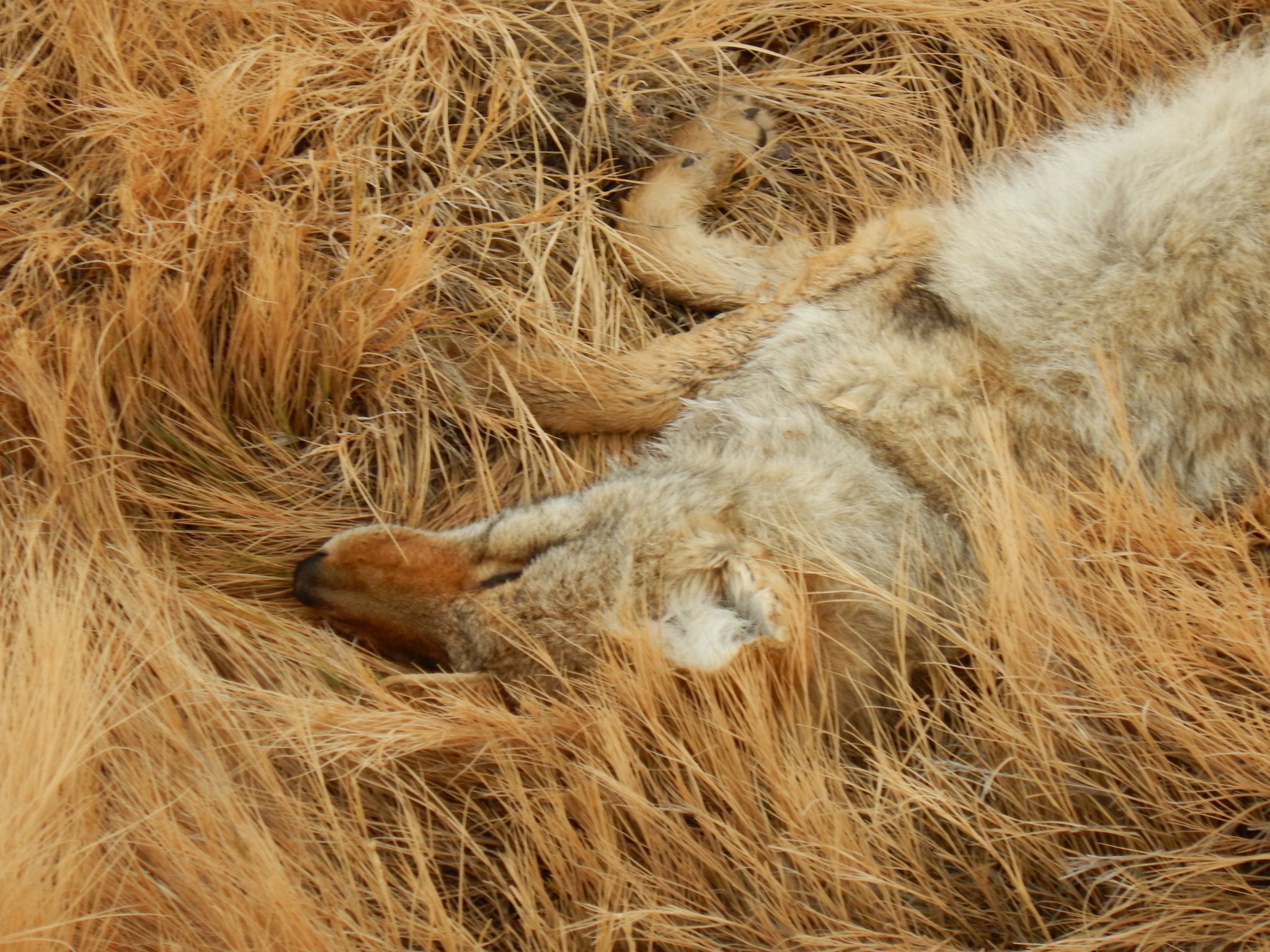

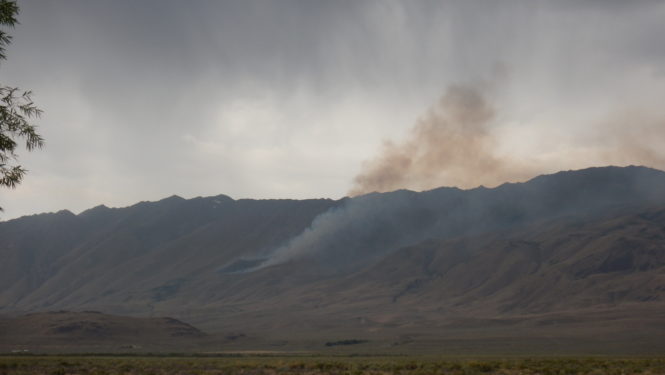
Love the smells of the desert. You describe them well.
Report comment
Beautifully, elegantly written. You captured the raw essence of place with eye of a scientist and the nose of a poet. Chanel, CLG
Report comment
I felt really lucky to get to attend one of the Fly Ranch tours you helped guide. It was October of 2017. You knew a lot about the plants and animals. Studying the place further, I realize the Ranch is a very different place in each season, and there is always more to learn, experience and appreciate about it. Thanks for your reporting.
Report comment
Loved this…thanks for transporting me there for awhile…I could smell it!
Report comment
Thanks! Great writing
Report comment
Ever so interesting, educating, so well written. Thank-you for sharing this story. Area surrounding the place we call home for a week once a year is a mystery; yet with its strange shaped rocks and sightings of bunny rabbits tends to make one ponder what kinds of plants and animals can survive such a dry climate with so much alkaline dust everywhere. Your words and images show the diversity. Much appreciated thank you.
Report comment
Comments are closed.